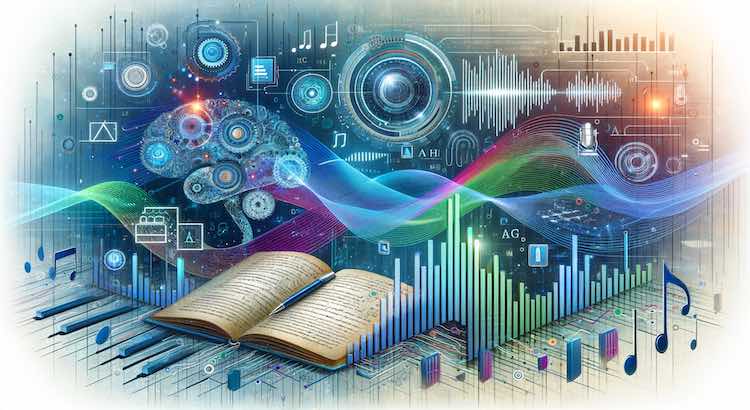The Transformation of Audio Transcription: How AI and Machine Learning Are Leading the Way
Audio transcription services have changed a lot in recent years. The rise of Artificial Intelligence (AI) and Machine Learning (ML) has brought about a revolution in how we turn speech into text. These digital tools deliver faster, more accurate results and open up new uses across law, healthcare, media, and education. In this article, you'll learn how AI and ML are reshaping transcription, making it more reliable, efficient, and affordable than ever before.
AI in Transcription: A New Beginning
From Manual Work to Automation
In the past, trained professionals listened to audio and typed every word by hand. This approach took a lot of time and often led to mistakes. According to GoTranscript's transcription services, human transcribers can achieve up to 95% accuracy under ideal conditions, but errors are still common (2023).
Today, AI-powered tools can transcribe audio automatically. By using advanced speech recognition and natural language processing, machines now do most of the heavy lifting. This makes the process quicker and helps reduce human error.
Key Innovations with AI and ML
- AI systems can learn speech patterns as they process more data.
- Machine Learning lets these tools recognize accents and industry jargon.
- Modern transcription services can handle a range of audio, from clear interviews to noisy event recordings.
- AI continually improves, learning from every new file processed.
For businesses and individuals wanting fast, reliable transcripts, automated transcription is now a top choice.
Main Benefits of AI and Machine Learning in Transcription
1. Improved Accuracy
- AI-powered systems often match or exceed human performance, reaching near 100% accuracy in some cases (2023).
- These tools excel even with background noise or multiple speakers.
- Modern Machine Learning models understand context, making transcripts more readable and logical.
2. Faster Turnaround
- What once took hours or days now can finish in minutes.
- This speed helps journalists, legal teams, and researchers meet tight deadlines.
If instant results are important, consider an AI transcription subscription to process high volumes quickly.
3. Lower Costs
- Automation cuts the need for large teams of transcribers.
- Businesses save money while still getting quality work.
- Affordable pricing opens up transcription for small businesses and students. Check transcription pricing for current rates.
4. Greater Access and Versatility
- AI transcription helps people with hearing loss by producing closed captions.
- Subtitles and translations open audio to global audiences, thanks to subtitling services and text translation services.
- Multiple speaker recognition and noise filtering expand possible uses in meetings, lectures, and more.
Common Challenges for AI in Transcription
What Remains Difficult?
- Distinguishing between overlapping or very fast speakers.
- Understanding heavy accents or rare dialects.
- Transcribing slang, technical language, or poor audio quality.
AI keeps improving, but sometimes transcripts need a human touch for maximum accuracy. That’s why services like transcription proofreading exist to check and correct automated transcripts.
Addressing Privacy Concerns
- Users worry about sensitive information in transcripts.
- Reputable providers protect data and comply with privacy laws.
The Future of AI and Machine Learning in Transcription
AI transcription tools are evolving fast. As research advances, we expect even better accuracy, faster processing, and broader language support (2023). Tools will learn to handle multi-speaker situations and provide better context—making transcripts clearer than ever.
- Natural language understanding will take context and meaning into account, not just words.
- Better integration with translation and audio translation services will reach more international users.
- Out-of-the-box solutions will offer instant results for businesses and individuals alike.
Automated captioning and subtitling will become a standard, not a bonus. Services will be flexible, letting users order transcription or order captions with just a few clicks.
Conclusion: Why GoTranscript Leads in AI-Powered Transcription
AI and Machine Learning have made audio transcription more accurate, accessible, and affordable than ever. These innovations let users convert spoken content into usable, searchable text quickly and easily. As technology advances, solutions will adapt to new needs and new industries.
If you want reliable, scalable, and secure transcription services, GoTranscript offers leading solutions in both human and automated transcription. From quick AI transcription to precise human proofreading, closed captioning, and multilingual support, GoTranscript helps you make the most of your audio and video content.



















 Verified Order
Verified Order